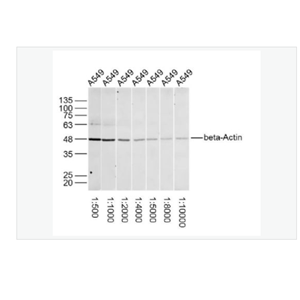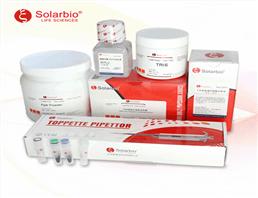pEYFP-Actin 载体
pEYFP-Actin encodes a fusion of the enhanced yellow fluorescent protein (EYFP) and human cytoplasmic b-actin (1). EYFP is an enhanced yellow-green variant of the Aequorea victoria green fluorescent protein (GFP; 2–4). The EYFP gene contains the four amino acid substitutions previously published as GFP-10C (5): Ser-65 to Gly; Val-68 to Leu; Ser-72 to Ala; and Thr-203 to Tyr. It also contains the Phe-64 to Leu mutation of GFPmut1 (6). The fluorescence excitation maximum of EYFP is 513 nm; the emission spectrum has a peak at 527 nm (in the yellow-green region). When excited at 513 nm, the Em of EYFP is 36,500 cm–1M–1 and the fluorescence quantum yield is 0.63 (5), resulting in a bright fluorescent signal. The fluorescence observed is roughly equivalent to that from EGFP.
In addition to the chromophore mutations, EYFP contains >190 silent mutations that create an open reading frame comprised almost entirely of preferred human codons (7). Furthermore, upstream sequences flanking EYFP have been converted to a Kozak consensus translation initiation site (8). These changes increase the translational efficiency of the EYFP mRNA and consequently the expression of EYFP in mammalian and plant cells. The vector contains an SV40 origin for replication and a neomycin resistance (Neor) gene for selection (using G418) in eukaryotic cells (9). A bacterial promoter (P) upstream of Neor expresses kanamycin resistance in E. coli. The vector backbone also provides a pUC origin of replication for propagation in E. coli and an f1 origin for single-stranded DNA production.
载体应用
This vector is designed for the expression of the EYFP-Actin fusion protein in mammalian cells. The protein is incorporated into growing actin filaments and allows for visualization of actin-containing subcellular structures in living and fixed cells (10, 11). With the appropriate filter sets, pEYFP-Actin can be used for dual labeling experiments with any of CLONTECH's vectors encoding enhanced cyan fluorescent protein (ECFP). pEYFP-Actin is not intended as a cloning vector; however, there are unique restriction sites at the 5' end of EYFP, at the EYFP-Actin fusion junction, and at the 3' end of the b-actin sequences for excision of the sequences encoding the EYFP-Actin protein fusion. Note that the sites at the 3' end of the b-actin sequences are downstream of the stop codon. pEYFP-Actin can be introduced into mammalian cells using any standard transfection method. If required, stable transformants can be selected using G418 (9).
特别提示:本公司的所有产品仅可用于科研实验,严禁用于临床医疗及其他非科研用途!






